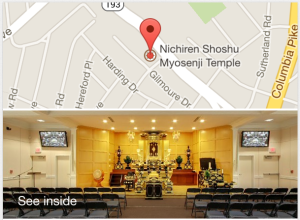
In 13th century Japan, Nichiren Daishonin, the founder of Nichiren Shoshu Buddhism, wrote:*
At times he is joyful; at other times, he is enraged. Sometimes, he is calm, and sometimes, he manifests greed. At times he exhibits foolishness, and at times he reveals a distorted mind. Rage represents the world of hell; greed characterizes the worlds of hunger. Foolishness is the world of animality, and a distorted mind is that of anger. Joy signifies rapture, and calmness demotes humanity. These six paths all exist in the physical appearance of his face. The four noble worlds are dormant, and are not revealed in his face. However, a careful search would show that actually they are there. (“The True Object of Worship,” Gosho p. 647)
Buddhist Concept of the Ten Worlds
The principle of the ten worlds is a way to categorize the life conditions that we possess. We perform the Buddhist practices to free ourselves from the cycle of delusion. By doing so, we can attain the life conditions of the four noble worlds — particularly Buddhahood.
Visit our Buddhist Temple – Sunday, January 18th at 2:00 pm
Every month our Chief Priest presents a lecture on the Ten Worlds and explain how we can liberate ourselves from the sufferings of the transmigration of the six paths mentioned in the passage above. Check our lecture/introduction meeting schedule and visit our Buddhist Temple to learn about Buddhism and your happiness.


